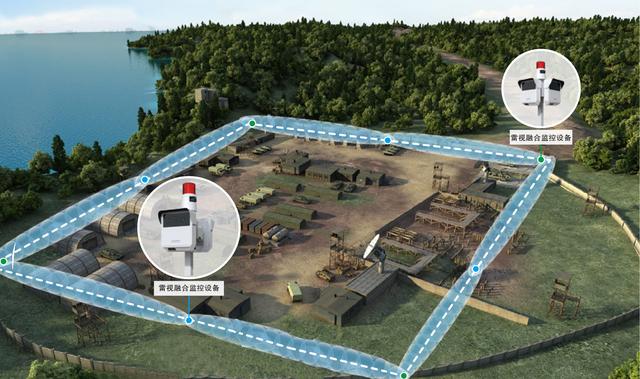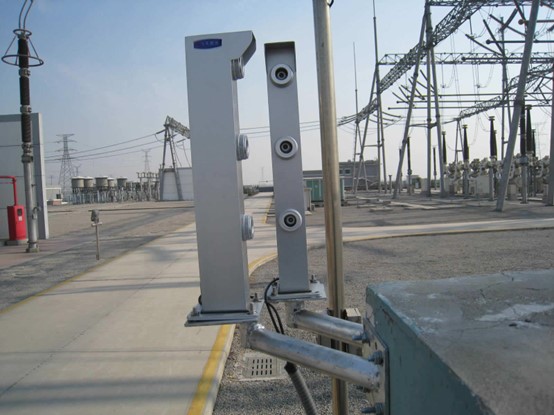The role of long-range detection perimeter surveillance radar in prison security

1、 Changes in prison security requirements
With the continuous development of the times, the security situation faced by prisons has become increasingly complex and severe. Once, traditional security measures played a certain role in ensuring prison safety, but now their limitations are gradually becoming apparent.
From some past cases, the problem can be seen, such as the escape incident that occurred at Liaoning Lingyuan Third Prison. Two convicted criminals took advantage of the loopholes in the security system at that time to enter the meeting room first, pried open the staff’s desk to steal cash, and then used noise to cover the doors and windows of the meeting room to escape. This incident reflects the shortcomings of some prisons in security construction, such as the lack of audio alarm devices, IoT alarm devices, and widely used intelligent monitoring devices, not to mention access control devices such as facial recognition and fingerprint recognition.
Early security equipment was constrained by technological conditions and timelines at the time, and had many flaws. On the one hand, the degree of “intelligence” is not enough, and many common technologies that seem to be applied today have not been applied, making the workload of on duty police officers extremely high, and it is difficult to achieve timely warning and prevention in the face of emergencies. On the other hand, there is a lack of linkage between various security devices, each fighting independently and unable to form collaborative applications between systems, which leads to low work efficiency and greatly prolongs emergency and response time. Furthermore, the utilization of data is not satisfactory. Security, warning, operation and maintenance data have not been fully utilized, and there are very few prisons nationwide that can form a closed loop for data management, analysis and decision-making. Moreover, traditional security equipment is mostly used as a “tool for post event evidence collection”, which is passive and difficult to prevent in advance.
In this context, there is an urgent need for upgrading security measures in prisons, and the emergence of long-range detection perimeter monitoring radar has brought new hope to prison security. With its unique advantages, it has begun to occupy an increasingly important position in the prison security system, which can largely compensate for the shortcomings of traditional security measures and build a new defense line for the safety and stability of prisons.
2、 Overview of Long Range Detection Perimeter Surveillance Radar System
Introduction to System Composition
The long-range detection perimeter monitoring radar system is a powerful assistant for prison security, mainly composed of multiple important parts. Firstly, there is the radar detector, which is like a sharp “eye” that can monitor the surrounding environment in real time, accurately capture the activities of people, vehicles, and other objects within a certain range, and not miss any subtle movements. With its professional detection function, it collects key basic information for the entire system.
The controller plays the role of the “brain” and can effectively control and adjust the radar detector. For example, the detection parameters and working modes of radar detectors can be flexibly set according to the characteristics of different areas around the prison perimeter, security priorities, etc., to ensure that they are always in the best working condition and maximize their detection capabilities.
The alarm can be regarded as the “speaker” of the system. When the radar detector detects abnormal situations, it will quickly respond through various alarm methods such as sound and light, such as emitting a piercing alarm sound and flashing eye-catching warning lights, to promptly inform relevant personnel of illegal intrusion and other situations, so that the staff can know and take countermeasures in a timely manner.
There are also surveillance cameras, which act as the “recorder” of the system, capable of real-time monitoring of the surrounding environment and clearly recording various situations that occur. Once an abnormal situation triggers an alarm, the footage recorded by the surveillance camera can become an important basis for subsequent investigation and analysis of the event, providing intuitive image data for tracing the event and finding the source of the intrusion. These different components work together and cooperate seamlessly to form a long-range detection perimeter monitoring radar system, laying a solid defense line for prison security.
Technical Advantage Explanation
The long-range detection perimeter monitoring radar system has many outstanding technical advantages, which enable it to demonstrate its capabilities in prison security environments. It has the characteristic of high precision, and with the help of advanced detection technology, it can accurately determine the detailed information such as the position and speed of the target object. Whether it is personnel attempting to climb over the wall or vehicles illegally entering, it can accurately capture abnormal signals, accurately locate the location of intruders, and have a very small error range. It provides accurate and reliable information support for subsequent emergency response, allowing prison management personnel to quickly respond and implement precise strikes.
The high sensitivity of the system is also a major highlight, even the slightest abnormal movement cannot escape its “magic eye”. In places like prisons that require high vigilance, any subtle movement can indicate potential security threats, and it can keenly perceive these subtle changes, issue timely warnings, and truly prevent problems before they occur, not giving criminals an opportunity to take advantage.
At the same time, its anti-interference ability is strong, and the surrounding environment of the prison is often complex, which may have various adverse factors such as electromagnetic interference and natural environment interference. However, the long-range detection perimeter monitoring radar system, with excellent anti-interference technology, can calmly respond to complex weather conditions or interference from other electronic devices in the surrounding area, always operate stably and reliably, ensure that security monitoring work is not affected, continue to play a role, and ensure the safety and stability of the prison. It is precisely these significant technological advantages that make long-range detection perimeter surveillance radar systems play an irreplaceable and important role in prison security.

3、 Specific role in prison security
Function of preventing illegal intrusion
In prison security scenarios, the role of remote detection perimeter monitoring radar in preventing illegal intrusion is particularly crucial. As a special place for imprisoning prisoners, prisons must ensure absolute security around their perimeter and prevent any unauthorized personnel or vehicles from entering. And with its high-precision detection capability, the radar can monitor every move within the prison perimeter in real time. Once personnel attempt to cross the border, such as criminals attempting to escape by climbing over walls or external vehicles breaking in illegally, the radar can quickly and accurately capture these abnormal signals and immediately trigger an alarm signal.
Subsequently, the alarm signal will notify relevant personnel through various means. On the one hand, the sound and light alarm will be activated, emitting a piercing alarm sound and flashing conspicuous warning lights, allowing the on duty personnel, patrol personnel, and others in the surrounding area of the prison to be informed of any abnormal situation at the first time. On the other hand, the system can also send alarm information to the prison’s security command center, relevant personnel, etc. through preset settings such as mobile phone text messages, so that they can quickly organize forces and take corresponding measures in a timely manner, such as dispatching prison guards to intercept and check the situation at the incident site, to minimize the security risks that may be caused by illegal intrusion and ensure the safety and order of the prison.
Automatic tracking and positioning function
In addition to its basic function of preventing illegal intrusion, the long-range detection perimeter monitoring radar also provides strong support for prison security with its automatic tracking and positioning functions. This radar can be linked with high-definition cameras. When it detects suspicious individuals or vehicles entering the perimeter of the prison, it can not only accurately determine key information such as the location and speed of the target, but also track the intruder’s movement trajectory in real time.
For example, when a prisoner attempts to move along the prison wall in search of an escape point, the radar will continuously lock onto the target and transmit relevant location data to the linked high-definition camera. After receiving the information, the camera will automatically adjust its angle and focus, always aiming at the intruder to ensure that every action and detail of their behavior can be clearly recorded. This clear and consistent record is crucial for post investigation. Relevant personnel can review the entire invasion process by viewing these video materials, analyze the intruder’s modus operandi, path, etc., so as to sum up experience and lessons, and strengthen and improve the weak links in prison security. At the same time, these materials can also be retained as strong evidence, which is beneficial for subsequent judicial procedures and other links. They also have important reference value for preventing similar intrusion incidents from happening again. Prisons can adjust patrol routes and add monitoring points based on past intrusion trajectories and other situations, further strengthening security barriers.
